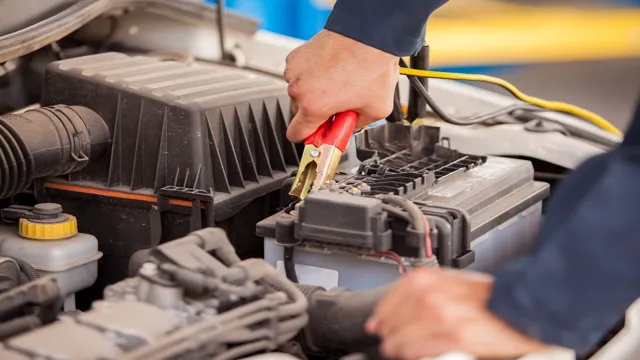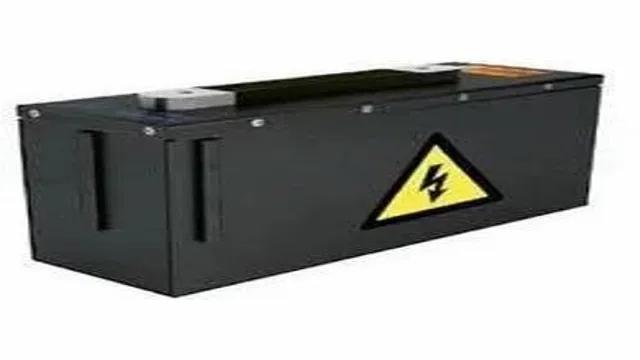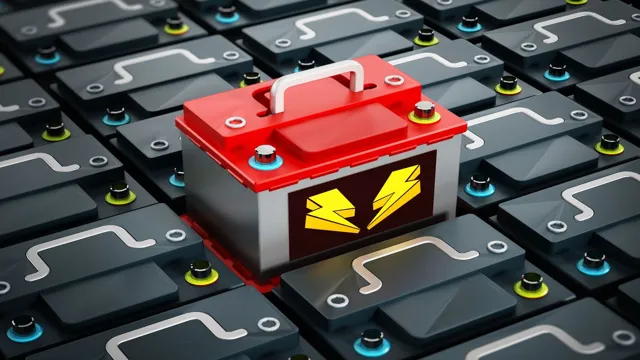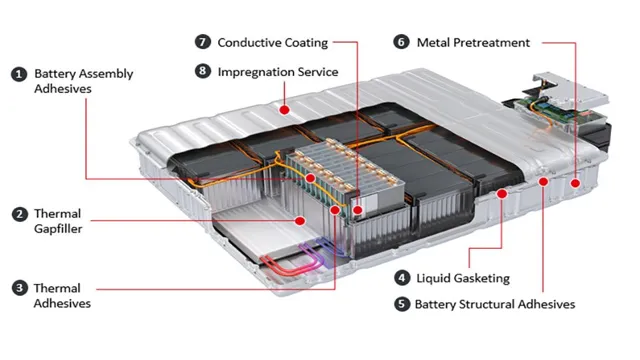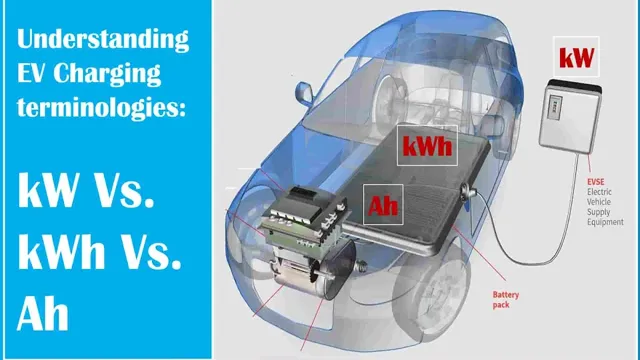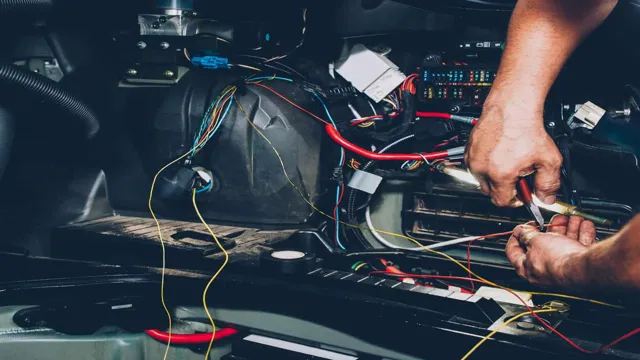Rev up your Ride: A Complete Guide to Adding Batteries to Car Electrical Systems
Have you ever experienced the frustration of having a dead car battery? Maybe you left your headlights on overnight, or forgot to turn off the radio before exiting. Whatever the cause, a dead battery can certainly ruin your day. But what if you could add another battery to your car’s electrical system, alleviating the risk of running out of power? Adding batteries to a car’s electrical system is not a new concept, and many car enthusiasts and off-road drivers have been doing it for years.
By adding a second or even third battery, you can effectively increase the amount of power available to your vehicle, reducing the strain on any one battery and prolonging their lifespans. But how does it all work? And what are the benefits of adding extra batteries to your car’s electrical system? In this blog, we’ll explore the ins and outs of adding batteries to your car, from wiring and installation to the different types of batteries available. Whether you’re a seasoned car enthusiast or just looking for some simple upgrades to improve your driving experience, this article will provide valuable insight into the world of car battery setups.
Introduction
Adding batteries to a car’s electrical system can provide numerous benefits, especially if you have a lot of gadgets and electronics in your vehicle. Multiple batteries can help your car start more reliably, run your accessories for longer periods, and maintain charge for longer periods. But it’s essential to know that adding batteries requires a little technical knowledge and the right hardware.
Before you hook up a new battery, you need to make sure it matches the battery used in your vehicle and that it won’t overload your electrical system. Improper installation or mismatched batteries can cause significant damage to your car’s electrical system or even create a fire hazard. So it’s best to consult with a professional to ensure that everything is correctly installed and wired correctly.
Once you add more batteries to your car’s electrical system, you can relax and enjoy endless hours of entertainment and functional usage without worrying about running out of power anytime soon.
Current Car Electrical System
The current car electrical system can be quite complex, but it’s an integral part of any modern vehicle. Essentially, the car’s electrical system provides power to all of the car’s electrical components and systems. These range from the car’s lights to the stereo system, as well as vital parts like the engine’s sensors and control systems.
The current car electrical system uses a combination of components including the battery, alternator, and starter motor. Batteries store energy that is used to start the engine and power the car’s electrical systems when the engine isn’t running. The alternator generates electrical power while the engine is running and recharges the battery.
The starter motor uses electrical energy to start the engine when the ignition key is turned. All of these components work together to keep the car’s electrical systems running smoothly and reliably. As cars continue to get more advanced, the electrical system is only going to become more important, so it’s important to keep it in good working condition.

Why Add More Batteries?
Adding more batteries to your electronics may seem unnecessary, but there are actually several benefits to doing so. Not only does it increase the power capacity and runtime of your devices, but it also allows for longer periods of use without needing to recharge. Additionally, having extra batteries on hand can be handy in emergency situations where power sources are limited.
By investing in more batteries, you can ensure that your devices always have the necessary power to keep you connected and productive. So why not add a few more batteries to your arsenal? It could save you from a dead device just when you need it the most.
Choosing the Right Battery
When considering adding batteries to your car’s electrical system, it’s crucial to choose the right battery for your vehicle. First, you need to identify the size and power requirements of your car’s electrical system and choose a battery that meets those requirements. You don’t want to select a battery that’s too weak or too powerful, as it can cause issues with starting your car or even damage your electrical system.
Another consideration should be the battery’s lifespan and maintenance requirements. If you don’t drive your car regularly, you may want a battery with a longer lifespan that requires less maintenance. Lastly, consider the type of battery you want, whether it’s a lead-acid or lithium-ion battery.
Lead-acid batteries are typically less expensive, but lithium-ion batteries last longer and are more environmentally friendly. With these considerations in mind, selecting the right battery can help ensure your car performs well and has a reliable electrical system.
SLA vs AGM Batteries
When choosing the right battery for your needs, it’s important to understand the differences between SLA and AGM batteries. SLA batteries, also known as sealed lead-acid batteries, have been a popular choice for many years because of their reliability and long lifespan. However, AGM batteries, or absorbed glass mat batteries, have become increasingly popular due to their ability to handle a higher current and their lower maintenance requirements.
Both types of batteries have their pros and cons, so it’s important to consider your specific needs and usage before making a decision. Ultimately, choosing the right battery will result in better performance and longevity, making it a worthwhile investment.
Capacity and CCA Ratings
When it comes to choosing the right battery, two critical factors to consider are its capacity and CCA (cold cranking amperage) rating. Capacity measures how much energy the battery can store and deliver over time. This is an essential consideration for devices that require continuous power, such as electric vehicles or backup power systems.
On the other hand, CCA rating measures the battery’s ability to deliver a burst of power required to start the engine on a cold day. The higher the CCA rating, the easier it is for the battery to start the engine. However, a battery with a high CCA rating may not necessarily have a large capacity, making it less suitable for applications requiring long-lasting power.
When selecting a battery, it’s crucial to identify your specific needs and choose an option that meets those requirements. With the right battery, you can ensure that your devices and systems operate efficiently as possible.
Adding More Batteries
If you’re looking to add more batteries to your car’s electrical system, there are a few things you should consider before getting started. First, it’s important to ensure that your alternator is capable of handling the extra load that additional batteries will put on it. You’ll also need to make sure that your electrical system can handle the additional amperage that will be required to charge multiple batteries.
Additionally, you’ll want to ensure that the batteries you’re installing are all the same type, age, and capacity. This will help prevent any issues with uneven charging or discharging, which can lead to premature battery failure. One option for adding batteries is to use a battery isolator, which allows you to charge the batteries separately while still maintaining a steady voltage throughout your entire electrical system.
Whatever method you choose to add more batteries, be sure to do your research and seek professional guidance if you’re unsure about any aspect of the process.
Parallel vs Series Wiring
Adding more batteries to your system can increase your power storage and provide longer run times. However, when it comes to wiring multiple batteries, you have two options: parallel and series wiring. In parallel wiring, the positive terminals of all batteries are connected together, as are the negative terminals.
This method increases your amp-hour capacity without changing your voltage. Meanwhile, series wiring links the positive terminal of one battery to the negative of the next, effectively stacking them up like a ladder. This will increase your voltage but not your amp-hours.
It’s important to note that there are pros and cons to each method. Parallel wiring is great for stabilizing voltage levels, extending run times, and ensuring even discharge rates. Meanwhile, series wiring can provide stronger current outputs, allowing for more power-hungry uses.
However, if one battery fails in series wiring, the entire system may shut down, while in parallel wiring, only the faulty battery is affected. When adding more batteries, it’s important to keep in mind your specific application needs and limitations. Be sure to use batteries with matching voltage and amp-hour ratings, and consult a professional if you are unsure about which wiring method is right for you.
With the right setup, however, adding more batteries can provide reliable power for all your needs.
Placement and Mounting
When it comes to adding more batteries to your solar power system, placement and mounting are crucial factors to consider. The first thing to keep in mind is the space available for additional batteries. Depending on the size and weight of the batteries, you may need to reinforce your mounting structure to ensure it can handle the extra weight.
Additionally, you’ll want to consider the location of your batteries to optimize performance and reduce the risk of damage. Placing your batteries in a cool, dry location is ideal to prevent any overheating or moisture buildup. It’s also important to properly connect the new batteries to your existing system to ensure seamless integration.
With careful consideration and planning, adding more batteries to your solar power system can provide increased efficiency and reliability for your energy needs.
Maintaining the Battery System
If you’re considering adding batteries to your car’s electrical system, it’s important to know how to maintain the system properly. First and foremost, make sure that the batteries are installed correctly and securely. It’s also important to regularly check the battery levels to ensure that they are fully charged.
You can use a multimeter to measure the voltage of each battery and make any necessary adjustments. Additionally, it’s important to clean the battery terminals regularly to prevent corrosion. You can use a wire brush and a solution of baking soda and water to clean the terminals.
Finally, it’s important to regularly inspect the battery system for any signs of wear or damage, and to replace any batteries that are no longer functioning properly. By following these guidelines, you can ensure that your car’s battery system is operating effectively and reliably.
Charging and Monitoring
Maintaining the battery system is critical to ensure optimal performance and longevity of the batteries. Charging and monitoring play a vital role in maintaining the battery system. It is essential to keep the batteries charged to their full potential regularly.
Overcharging or undercharging can cause damage to the batteries and reduce their lifespan. Charging the batteries to their maximum capacity and then disconnecting them is the recommended method to prevent overcharging. Monitoring the batteries’ temperature, voltage, and electrolyte levels is also essential to prevent damage and ensure the batteries’ optimal performance.
Regularly inspecting the battery cells for any signs of leakage or damage is crucial to prevent a potential failure. It is necessary to keep the batteries clean and dry to ensure their longevity and prevent any damage caused due to corrosion. So, regular maintenance of the battery system, including charging and monitoring, is essential to ensure its optimal performance and longevity.
Sulfation and Maintenance Tips
When it comes to car maintenance, the battery is often overlooked until it fails. However, taking care of your battery system can save you from experiencing the inconvenience of a dead battery and the cost of having it replaced. One of the most common issues with lead-acid batteries is sulfation, which occurs when lead sulfate crystals accumulate on the battery plates, reducing its capacity and performance.
To prevent this from happening, it’s recommended to regularly charge the battery fully and avoid deep discharging. You can also use a desulfator or a battery conditioner to break down the sulfate crystals and return the battery to peak performance. Finally, keeping the battery terminals clean and free of corrosion can also prolong the battery’s life.
By properly maintaining your battery system, you can avoid the headaches and expenses of replacing it prematurely.
Conclusion
In conclusion, adding batteries to a car’s electrical system can provide a boost in power, but it’s important to remember that too much of a good thing can also be bad. Just like with anything in life, balance is key. Whether it’s finding the right number and type of batteries, or making sure they are properly connected and maintained, a little bit of caution and planning can go a long way.
So, if you’re considering adding batteries to your car’s electrical system, just remember to keep things in check and you’ll be cruising in style and efficiency.”
FAQs
What are the benefits of adding batteries to a car’s electrical system?
Adding batteries to a car’s electrical system can help improve its overall performance, especially if you have a lot of power-hungry accessories like sound systems or winches. It can also provide a safety net in case the primary battery fails, allowing you to continue driving without interruption.
Can any battery be used for adding to a car’s electrical system?
No, not all batteries are suitable for use in a car’s electrical system. It is essential to select a battery with the right specifications and type (deep cycle vs. starting) to ensure it can handle the load and be compatible with your vehicle’s charging system.
How do you properly install additional batteries in a car’s electrical system?
Installing additional batteries in a car’s electrical system requires careful planning and knowledge of electrical systems. Proper installation involves connecting the batteries in parallel, using a battery isolator or combiner to prevent overcharging or discharging, and ensuring adequate ventilation and secure mounting.
What are some common mistakes to avoid when adding batteries to a car’s electrical system?
Some common mistakes to avoid when adding batteries to a car’s electrical system include using the wrong type of battery, not properly securing the batteries in place, connecting the batteries incorrectly, or overloading the electrical system with too many accessories. It is vital to consult with a professional or knowledgeable mechanic to ensure your installation is safe and effective.
